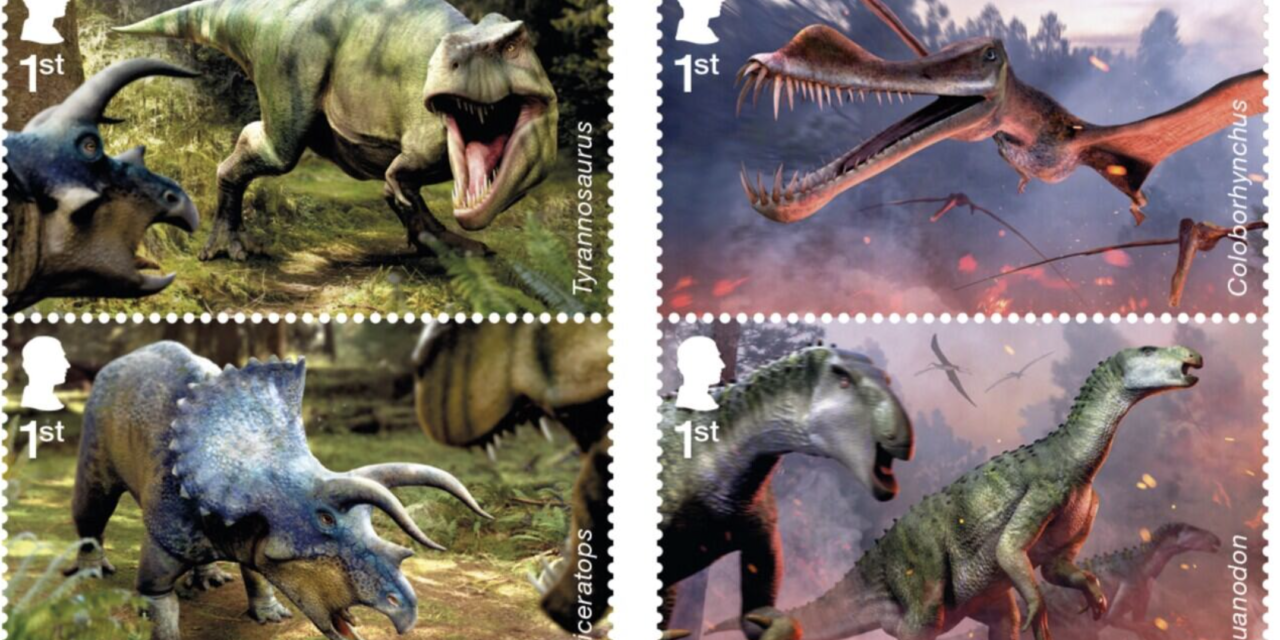
Royal Mail and NHM collaborate on new prehistoric stamp set

Royal Mail reveals images of eight new, stunning stamps that include dinosaurs and other prehistoric reptiles from the Jurassic and Cretaceous eras, created in collaboration with experts at the Natural History Museum, consulting with scientists specialising in various areas of palaeontology.
An additional sheet of four stamps recognises the contribution of palaeontologist Mary Anning. Mary Anning was one of the first professional fossil hunters and her discoveries on the Dorset coast, near her home in Lyme Regis, paved the way for modern palaeontology and contributed to our understanding of prehistoric life on Earth.
David Gold, Director of External Affairs and Policy said: “We were thrilled to feature incredible dinosaurs from the mighty Tyrannosaurus rex to graceful Diplodocus as well as other fascinating prehistoric reptiles in their natural habitats. It is fitting in the week of International Women’s Day that we pay tribute to Mary Anning with four images of some of the fossils she discovered. She was one of the greatest fossil hunters of the 19th century, making a major contribution to our understanding of the majestic creatures that roamed the Earth hundreds of millions of years ago.”
Maxine Lister, Head of Licensing at the Natural History Museum, said: “We were thrilled when Royal Mail approached us to collaborate on these brilliant sets of stamps. It’s perfect timing too, as we have just celebrated the 200th anniversary since the naming of the first dinosaur: the Megalosaurus, which features as part of this collection. Our mission is to create advocates for the planet and we hope these stunning designs inspire everyone to discover a bit more about our natural world, whether that be the creatures that lived here before us, or the pioneering figures who shaped our understanding of them today.”
Age of the Dinosaurs
The Mesozoic Era, or the ‘Age of the Dinosaurs’ as it is commonly known, lasted from 252 to 66 million years ago and comprises, in order from oldest to youngest, the Triassic, Jurassic and Cretaceous Periods. During most of this time, from the Late Triassic onwards, a group of reptiles known as dinosaurs dominated the land. Other non-dinosaur reptiles also thrived during this period, including marine reptiles, such as ichthyosaurs and plesiosaurs, as well as the flying pterosaurs.
Fossilised remains help us to unearth the secrets of these incredible creatures, and one of the greatest fossil hunters of the 19th century was Mary Anning. Anning lived during a time when it was fashionable for wealthy Georgians to visit seaside towns to acquire fossils to add to their cabinets of curiosities. It was also when palaeontology was becoming recognised as a branch of the natural sciences. Anning spent her life unearthing ‘curios’ from the fossil-rich cliffs near her home in Lyme Regis, Dorset, to sell to tourists and scientific collectors alike, and made many important discoveries. A fascination with prehistoric life continues today. Palaeontologists study all fossilised past life, including corals, fishes, mammals and plants, in addition to prehistoric reptiles. Fossils can help us not only to learn about the lives of these species, but to understand what the Earth was like in the past.
















